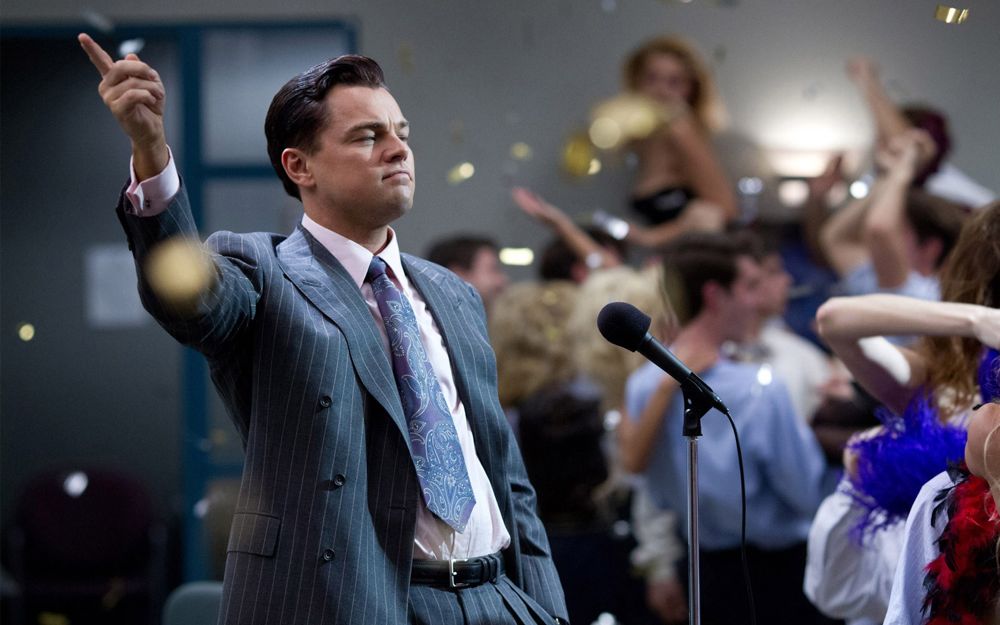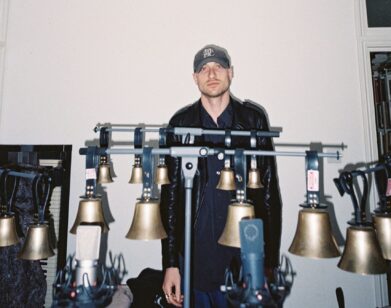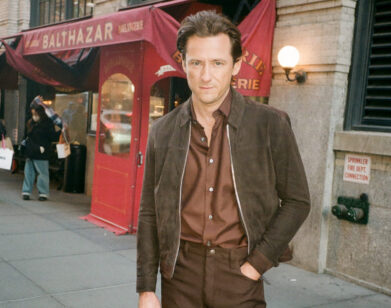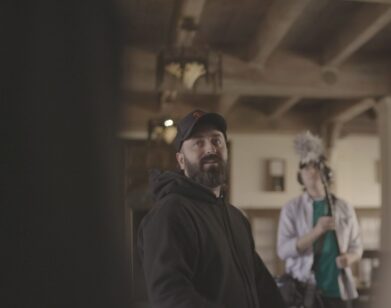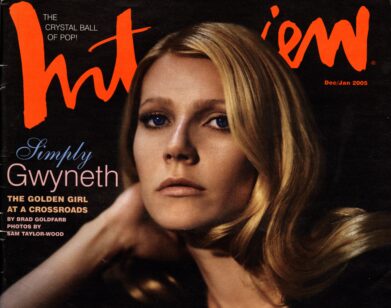Rodrigo Prieto: Master Cinematographer
Spike Lee, Ang Lee, Pedro Almodóvar, Cameron Crowe, Ben Affleck, Julie Taymor, Oliver Stone, Curtis Hanson, Martin Scorsese, and, of course, Alejandro González Iñárritu, are just some of the directors Mexican cinematographer Rodrigo Prieto has worked with over the last 15 years. Most of them have employed Prieto more than once: Prieto has worked on every one of Iñárritu’s films with the exception of Birdman, which he was unable to do because he was finishing The Wolf of Wall Street with Scorsese. Next year, Prieto will team up with Scorsese again for Silence, starring Andrew Garfield, Adam Driver, and Liam Neeson. He was nominated for an Oscar for Ang Lee’s Brokeback Mountain in 2006—a job he was originally offered after Lee saw 21 Grams (2003), one of Prieto’s films with Iñárritu —and filmed Lust, Caution with Lee the following year.
If there’s one thing that connects Prieto’s films it is that they are well shot and aesthetically pleasing. Like the best of actors, the Oscar-nominated cinematographer separates his ego from his work. Prieto doesn’t have a signature style he imprints upon every film he is involved in, but can go directly from a film about visual excess and over-saturated opulence like The Wolf of Wall Street (2013) to a stark Western like Tommy Lee Jones’ The Homesman (2014), in which the elements of composition are limited to the land, the sky, and a box-shaped wagon. “I’ll do whatever is necessary for each project,” he tells us after a screening of The Homesman at the Savannah Film Festival presented by SCAD.
Last year, Prieto also dabbled in directing with Likeness, an eight-minute film that was nominated for Best Narrative Short at the 2013 Tribeca Film Festival. Starring Elle Fanning, whom Prieto first met while filming Babel (2006) and reconnected with on the set of We Bought a Zoo (2011), the film is loosely based on Prieto’s youngest daughter’s struggle with anorexia. It is an arresting, visceral dissection of body image and the manifestations of crippling self-loathing among young women.
EMMA BROWN: How did you get involved in The Homesman? Did Tommy Lee approach you?
RODRIGO PRIETO: I was starting to prepare The Wolf of Wall Street and Tommy Lee invited me over to his house in San Antonio. At that the time, I was traveling to New York with my daughter Ximena, and so en route we stopped in Texas, in San Antonio, and we spent a night at his home. And it was lovely. We had dinner with him and his wife, Dawn, who’s a still photographer. I had read the script, of course, and I knew that I had to shoot this movie. I really liked the story. I just imagined it immediately. I thought it was something that I really wanted to light, to put a camera in front of that story. I hadn’t met Tommy Lee Jones before, [but] that dinner he even started talking about some of the visual concepts he had–about minimalism and [visual artist] Donald Judd and things of that sort. I also took a couple of books with me. One was a photography book called Gypsies by Josef Koudelka. I gave it to him because I thought it was emblematic of some of the images, especially in the flashbacks and the scenes with the women where they’re going insane. Koudelka had some really textured interiors in his work with gypsies. Tommy Lee loved that and so right after I finished The Wolf of Wall Street I jumped onto it.
BROWN: Did he mention any of your previous films when he approached you?
PRIETO: He didn’t. He never referenced any of my previous work, actually. I guess he’d seen enough to make him decide he wanted me to shoot it, but he didn’t mention it. He also has a little bit of a, not Mexican background, but he speaks Spanish. In Texas, he works with a lot of people who are Mexican so that also brought us together in a way. Of course, our working relationship was in English, but we peppered in Spanish.
BROWN: Do most directors bring up your past work when you’re discussing a new film? You mentioned that when you met Ang Lee for Brokeback Mountain he said that he’d seen 21 Grams and really loved it, but didn’t want Brokeback Mountain to be anything like that.
PRIETO: Yeah, sometimes. When I meant Martin Scorsese for The Wolf of Wall Street, he mentioned Lust, Caution (2007), which is a movie I did with Ang Lee in China, which has nothing to do with The Wolf of Wall Street. That’s a movie that he saw of my work that he liked, but I have no clue why that would make him think The Wolf of Wall Street–why I’d be the proper person to do that. I guess it was similar to Ang Lee; he saw that I could do something that he liked. Then when we met, it was good chemistry and I really enjoyed working with him. In one case, it was the opposite. It was when I was meeting Curtis Hanson for 8 Mile (2002), he referenced Amores Perros (2000) and he wanted a handheld, documentary-style look for the movie. But he had also seen lots of my previous Mexican movies before Amores Perros, which were in a completely different style. They were much more classic, let’s say, and pretty. He interviewed me four times before he finally decided I would do it. He wouldn’t make up his mind until finally at the last interview he told me, “I’ve seen all these other movies of yours and that’s not the style I’m looking for. I just want to be sure that Amores Perros wasn’t a fluke or something where it was mostly the director that made you do that look.” So I told him that was the look that that movie required. Then he said that he wanted 8 Mile to be a movie that looked like a weed growing out of the sidewalk. I totally got it and I said, “Okay, that’s what it will look like.” So that was kind of the opposite where I had to fight against my previous work to get that job, but I really wanted to do that movie.
BROWN: When you were little and you were making movies with your brother, did you want to become a director? I feel like cinematographer isn’t a job you really know about when you’re young.
PRIETO: I didn’t quite understand the separation of the duties. For me, it was making movies; since there was no one in my family that worked in the film business and I’d never visited a set, I didn’t have a notion of a person that managed the camera, a person that directed the actors. It was just, “Let’s make a movie,” and, “Hey, maybe I’ll act. Who’s going to operate the camera?” Sometimes, I’d ask my mother to come in and go, “Hey mom, I already set up, just look through here.” It was much later that I started to understand what a cinematographer did. In fact, it wasn’t until the end of high school that someone mentioned film school. I thought maybe I was going to work in advertising or something like that because I liked graphic design. But then someone mentioned [film school] so I thought, “Oh hey! That’s a way for me to keep doing movies.” It wasn’t, “Oh that’s a way for me to become a director or a cinematographer.” I enrolled in this little film school that did Super 8. At the same time, I was studying communications at another university. Eventually the film school closed down. I had already quit the other school because I was [more] into film, so suddenly there was nothing. I started working with a still photographer. It was at that time that I started really liking the photography side of filmmaking. When I enrolled at another film school, I already knew what I liked. At this second film school, in the first year you have to do everything; you have to direct. I liked directing, but at this school they were very serious with the directors. Everything had to be very serious. I didn’t like that because I grew up doing my Super 8 movies and it was fun. It was playful. I discovered that as a cinematographer, I could still play and nobody would mind. That’s kind of my approach to cinematography: It’s playful; it’s joyful. Recently, I’ve gotten a little bit into directing. I directed this short movie and eventually I’ll have some projects to direct as features maybe. Now, I think I’m in a place where I can do that playfully as well. I’m also ready to dig into personal emotions and things I want to express. In lighting and cinematography, it’s a very abstract way of expressing. It’s an art form that’s not concrete. It’s not like you’re writing a poem or something that’s expressing a feeling in words–or even a painting that represents something. It’s just utilizing the energy of light to express emotions. Directing is more direct. [laughs] I’m interested in exploring that as well.
BROWN: As a cinematographer, what do you want from your director? Do you prefer when they have a specific image in mind or when they ask you what you want to do?
PRIETO: I enjoy working with very different types of directors and that’s what I’ve done throughout my career. I like getting into their world and their mind and being flexible and not pushing them in one direction or another. I bring ideas and concepts to the table, but I try to really get into the director’s worldview. Some directors will be very specific. Ang Lee is very specific on the shots he wants. Others, [like] Curtis Hanson on 8 Mile, he would want to improvise the way we shot it. That was a thing he actually told me when I wanted to sit down with him and do the shot list. After several times of trying and saying, “Okay, should we do the shot list now Curtis?” Finally he said, “No, I don’t want to do a shot list. In the story, these guys improvise in the battles, they improvise their rap and all that.” He wanted to shoot it in that way. My preference is to get involved as much as possible. It’s not about the credit–it’s always the director’s movie–but it’s very enjoyable for me to actually participate: shot-listing or storyboarding, whatever it may be.
My fourth movie or so in Mexico, the director was a teacher of mine in film school. When I signed onto the project and started preparing, I didn’t know this, but he had a huge book that was a very specific storyboard. We started scouting locations and he already had it exactly planned, the angle. When I proposed, “Excellent idea, but in this direction we’ll have the depth” or whatever, he’d go, “No, this is what I already want.” So I quit. He didn’t let me quit though. I told him, “Hire someone else.” He insisted on me staying, so I decided to stay and shoot it as an exercise in learning how to work within those parameters, within those limitations. I said, “If I can make this work, if I can make these shots that his guy wants, it’s a very important exercise.” It helped me a lot in my career.
What’s hard about improvising, on the other hand, is it’s hard to prepare. Obviously time is such a factor in cinematography and filmmaking and when you know more in advance, you can prepare things and be more efficient. You can pre-light. You can have things set up. When you have no idea in what direction you’re going to shoot, you have to light each shot at that moment, so it makes it harder. You have to be on your toes.
BROWN: After the screening of The Homesman, you talked about some of the lighting rigs you created to get around specific problems. Did you know that inventing these contraptions would be such a big part of your job when you were studying cinematography in school?
PRIETO: No, I didn’t quite realize I would be part of it. But it’s all about imagination in the sense that you always imagine a result. That’s the first thing. You put a picture in your mind of how you want something to look. Then it’s, “How do I achieve that?”
BROWN: You’ve talked about a lot of directors approaching you. Have you ever had to really campaign for a job?
PRIETO: That was 8 Mile. Most of the time when I’m given a script, maybe the director is still interviewing other people, but they are interested in me or what I have to bring. I’ve lost jobs too. That was one case where I got it, but a couple of times I’ve been interviewed and then someone else got the job, and that’s pretty devastating. [laughs] You sometimes think, “What did I do wrong?” Or maybe it’s not that, maybe it’s that the other cinematographer had a vision that the director responded to. Early in my career when I started to do American movies [but] was still in Mexico, I remember being interviewed and then not getting the job. I realized that maybe I came on too strong. I read the script on airplane flying to L.A. from Mexico City to meet the director, and I was taking all sorts of notes: “This could be like this!” So our first interview, I was like, “In this scene, maybe we could light like this! And what about if that’s handheld!” I had all these ideas and was overly enthusiastic and I realized I was overwhelming the director—maybe the director wasn’t even ready for that and felt that I was going to doubt him. That helped me realize [that you should] first sit down and listen to the director, not expecting ideas right away. That was a good failure.
BROWN: When you come from a movie that’s so different in tone–such as from The Wolf of Wall Street to The Homesman–do you have consciously cleanse your mind before you start?
PRIETO: I live very much in the present, which is sometimes an issue. It’s hard for me to plan in the future. In fact, when I went to film school, I didn’t know that I would really work in the film business. I didn’t even care. I just wanted to be in film school. I focus on what’s here and now. It’s not so difficult for me to forget the previous project. I automatically get interested in the new one. I’ve never been good at multitasking. I use that to my advantage because when I’m working on a movie, I’m like a laser. That becomes it; that’s my life. Ang Lee told me something similar, because he does incredible amounts of research. When we were doing Brokeback Mountain, he really got into everything about the cowboys and the sheep and the accent and all these things, the detail of things. And I told him, “Wow, you’ve really learned a lot about these things,” and he goes, “I forget. I finish a project and then it’s gone. I’m only interested in that moment because that’s what I’m doing at that time.” For me, it’s similar. One day at a time and one project at a time.
BROWN: When you first get a script do you make a mood board of images? What do you do first?
PRIETO: The first thing I do is read it as if I were reading a novel and not as a cinematographer. I remember I used to read and right away I’d write ideas and concepts. Now I just try to feel the story. When I meet a director, I try to first talk about emotions and what the story means for the director. That’s why earlier I said that what I want from a director is passion; I want to do projects that are important to the director. Because then it’s personal and it matters. Every decision about a movie, about cinematography, about light, about camera placement, is emotionally important. And after all, what matters in life, I think, is what you feel. So movies are represented emotions. I try to put those emotions into images. For me, that’s the main approach.
BROWN: Are you a movie crier?
PRIETO: Yeah.
BROWN: What’s the last movie that made you cry?
PRIETO: The Broken Circle Breakdown (2012).
BROWN: Oh the Belgian one? That movie was devastating.
PRIETO: Yeah, I love that movie. Sometimes I cry while shooting, while operating the camera. I can think of two examples. One was in Amores Perros, when the character that has all these dogs–he’s a killer for hire–and he leaves a message for his daughter on the answering machine. When we shot that the actor was looking at a photograph of his actual daughter and in fact, that photo that you see in the movie of the little girl, is his daughter. The girl that’s he’s following, that you just see fleetingly, is his daughter. When he leaves that message, he got really touched. Of course, I have two daughters and it really touched me as well. It’s all about him wanting to be more present, which is something that happens in this career that I picked, which is very intense and time-consuming, and there are a lot of times when I’d like to be with my daughters more and I haven’t been able to. So it made me cry. The second time was in 21 Grams, when we were shooting Naomi Watts listening to the message that her husband left right before they were run over by a car. Hearing the little girls–at that time my girls were little–her listening to it over and over, I was bawling.
BROWN: I wanted to talk about your short Likeness. Did you originally have Elle Fanning in mind?
PRIETO: Yes. She’s lovely and wonderful. When I thought of this idea, I thought that Elle was great for it because I wanted someone that didn’t look like someone in the advanced stages of an eating disorder. I wanted someone that, when looking at the movie, you could relate to them, you could say, “That could be me,” because there are many different levels of eating disorders, but a lot of people have an eating disorder and look regular. They don’t look like someone who has been anorexic for years. That’s why I thought she was great, besides being a fabulous actress. I proposed the idea to her and she loved it right away; she jumped on it.
My daughter Ximena went through anorexia. It was a way to communicate with her and it became a great collaboration. It was much easier to talk about music and costumes and images, than, “Okay, Ximena, why did this happen?” It was a great vehicle for both of us to open up and talk about what we went through. The response has been incredible. Due to the short, so many people that haven’t shared the fact that they have an eating disorder will say it either to me or somebody else. That’s the objective, to get the communication going and, in a little way, try to take the taboo out of it and say this is something we can talk about and it’s no shame to go through these issues.
BROWN: There’s shame on both sides. People don’t want to talk about it, but people also don’t want to hear about it. It’s like you’re over-sharing.
PRIETO: That’s very common in our society. People don’t want to deal with their own emotions or someone else’s. When you start hearing about something not so nice that someone’s going through, it’s better not to because it starts reflecting on what you are feeling. We start living in a society where it’s all about evasion.
THE HOMESMAN COMES OUT IN LIMITED RELEASE ON FRIDAY, NOVEMBER 14.

